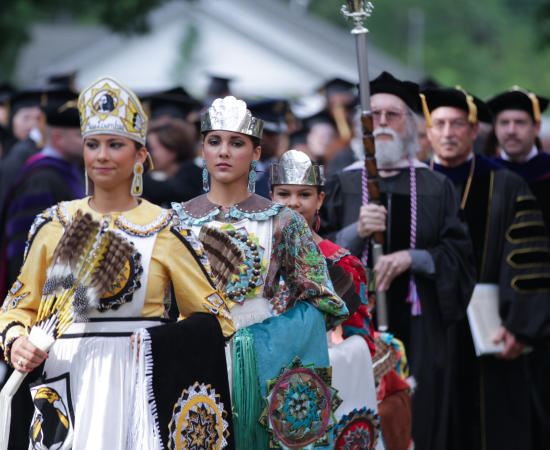Native American Serving Non-Tribal Institutions (NASNTIs)
AASCU’s member NASNTIs increase access to higher education for Native American students. Different from Tribal Colleges and Universities, these institutions gain designation based on the demographics of their undergraduate student enrollment and not institutional mission.

NASNTIs play a critical role in serving Native American students enrolled in postsecondary education.
As the Higher Education Act amendments of 2008 outline, public or private nonprofit institutions can apply for federal NASNTI designation and funding through Title III if the college or university meets specified enrollment and financial requirements. These funds can be used for various purposes, such as developing faculty and improving student support services and academic programs.
To be designated as a NASNTI, an institution must have:
- Undergraduate Enrollment: At least 10% of undergraduate student enrollment must be Native American.
- Low-income student enrollment: The institution must enroll a high percentage of low-income students.
- Accreditation: The institution must be accredited by a recognized accrediting body.
- Public or Nonprofit status: The institution must be public or nonprofit, meaning it does not distribute its earnings to owners or shareholders.
- Low expenditures: The institution must have low educational and general expenditures, meaning lower resources with which to serve students.
100%
of public four-year NASNTIs are regional public universities
100%
of regional public universities that are NASNTIs are also Rural-Serving Institutions (RSIs)
Meet AASCU’s NASNTI members.
Native American Serving Non-Tribal Institutions by the numbers
Regional public universities that are NASNTIs enroll more than 38,000 undergraduate students.
46%
of all undergraduate students at regional public universities that are NASNTIs are people of color
61%
of undergraduate students at regional public universities that are NASNTIs are women
37%
of undergraduate students at regional public universities that are NASNTIs, on average, receive Pell Grants
Top fields of study:
28%
Social and behavioral sciences and human services
21%
Business and communications
17%
STEM fields
Data Sources & Notes
- The data presented on this page reflect AASCU’s institutional members. The institutional map includes only regional public universities who are AASCU’s institutional and associate member institutions.
- AASCU analysis of IPEDS data and College Scorecard data.
- The data presented on this page reflect AASCU’s institutional members. The institutional map includes AASCU’s institutional and associate member institutions.
- Data reflect institutions that met the eligibility requirements to apply for federal designation and funding as a Native American Serving Non-Tribal Institution in FY24.
- The term “people of color” represents individuals who identified as American Indian or Alaska Native, Asian, Black or African American, Hispanic or Latino, Native Hawaiian or other Pacific Islander, and multiracial.
- AASCU employs the framework and methodology developed by the Alliance for Research on Regional Colleges to designate our member institutions as rural-serving institutions (RSI). As such, AASCU designates any member institution that has an RSI score above the average score as an RSI.
- For a complete list of NASNTIs, visit the U.S. Department of Education’s Eligibility Matrices for Titles III and Title V Programs.
Questions about NASNTIs? Let us know.
"*" indicates required fields